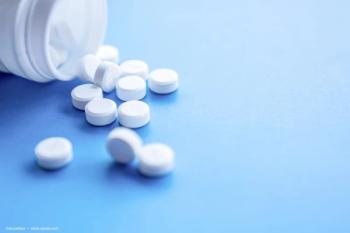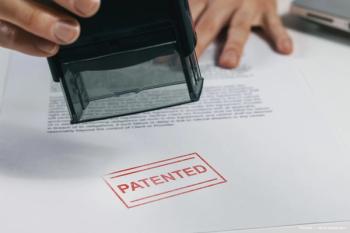
- Ophthalmology Times: July 15, 2021
- Volume 46
- Issue 12
Focusing on postinjection endophthalmitis
Systemic immunosuppression may prevent devastating complication in patients.
Editor's Note: The Ophthalmology Times® Research Scholar Honoree Program is dedicated to the education of retina fellows and residents by providing a unique opportunity for fellows and residents to share notable research and challenging cases with their peers and mentors. The program is supported by an unrestricted grant from Regeneron Pharmaceuticals.
Special to Ophthalmology Times®
The use of intravitreal anti-VEGF injections are the standard of care for the treatment of common retinal diseases. These include neovascular age-related macular degeneration (AMD), retinal vein occlusion, and diabetic macular edema.
Although anti-VEGF medications have excellent safety profiles, acute bacterial endophthalmitis remains an uncommon but potentially devastating complication. Multiple studies have evaluated procedure-related risk factors associated with postinjection endophthalmitis.
Patients taking immunosuppressive medications have an increased risk for endogenous endophthalmitis.
Purpose
To evaluate the effect of systemic immunosuppression on the rates and outcomes of endophthalmitis after intravitreal anti-VEGF injections.
Design
A retrospective, single-center, comparative cohort study.
Methods
All eyes receiving intravitreal anti-VEGF (bevacizumab, ranibizumab, and aflibercept) injections from January 1, 2016 to September 1, 2019 were included in this study.
The trial investigators used billing records and endophthalmitis logs to identify patients who developed endophthalmitis following the injections.
They reviewed the charts of all patients who were treated for endophthalmitis, and confirmed the diagnosis.
Endophthalmitis was defined as patients who presented with a clinical suspicion that was high enough to warrant either intravitreal antibiotic injection with vitreous/aqueous tap or pars plana vitrectomy with injection of antibiotics.
The investigators divided the cases into an “immunosuppression” group and a “no immunosuppression” group.
They defined the immunosuppression group as any patient taking systemic medication from the following classes at the time of intravitreal injection: corticosteroids, alkylating agents, antimetabolites, calcineurin inhibitors, mammalian target of rapamycin (mTOR) inhibitors, biologics, monoclonal antibodies, and chemotherapeutic medications.
The primary outcome measure was the rate of endophthalmitis in the immunosuppression group and no immunosuppression group.
Secondary outcome measures included visual acuity (VA) outcomes and microbiologic flora in both groups.
Results
Of 269,047 intravitreal injections administered over the study period, 1300 (0.48%) patients were taking a systemic immunosuppressive medication at the time of the causative injection.
Five of 1300 (0.38%; 1 in 260 injections) cases of endophthalmitis occurred in the immunosuppression group, and 100 of 269,047 (0.037%; 1 in 2690 injections) cases occurred in the no immunosuppression group (odds ratio, 9.86; 95% CI, 4.0-24.2; P < .001).
Of the 5 cases of presumed endophthalmitis in the immunosuppression group, 4 patients were taking oral prednisone and 1 patient was taking mycophenolate mofetil at the causative injection.
Three of 5 (60%) eyes in the immunosuppression group were culture positive compared with 32 of 74 (43%) cases in the no immunosuppression group (P = .650).
Patients with presumed endophthalmitis presented a mean (SD) 2.8 (1.9) days after injection in the immunosuppression group compared with 5.3 (5.4) days in the no immunosuppression group (difference, 2.51 days; 95% CI, 0.15-4.87; P = .040).
Mean (SD) logMAR (Snellen equivalent) VA at endophthalmitis presentation was 2.11 (1.2; approximately 20/2500) in the immunosuppression group vs 1.8 (0.91; approximately 20/1260) in the no immunosuppression group (P = .465).
At 6 months after endophthalmitis treatment, mean (SD) logMAR VA was 1.22 (1.3; approximately 20/330) for the immunosuppression group compared with 0.96 (0.93; approximately 20/180) for the no immunosuppression group (adjusted difference, 0.253; 95% CI, –0.99 to 0.48), P = .494).
Conclusion
Patients taking systemic immunosuppressive medications undergoing intravitreal injections may be at increased risk of postinjection endophthalmitis and may have earlier symptom onset.
However, visual outcomes were similar between the 2 groups 6 months after endophthalmitis treatment.
About the author
Samir N. Patel, MD
P:215-928-3000
Patel is affiliated with Wills Eye Hospital, Mid Atlantic Retina and Thomas Jefferson University in Philadelphia, Pennsylvania. He has no financial disclosures related to this topic.
Articles in this issue
over 4 years ago
Expectations are on rise for presbyopia-correcting therapeuticover 4 years ago
Addressing GA by downregulating overactive complement systemover 4 years ago
The benefits of cryopreserved amniotic membrane during COVID-19over 4 years ago
CRISPR technology: A hot topic in gene therapyover 4 years ago
VA and visual function go the way of ocular inflammationover 4 years ago
Bariatric surgery may lead to decreased risk of cataractNewsletter
Don’t miss out—get Ophthalmology Times updates on the latest clinical advancements and expert interviews, straight to your inbox.
















































.png)


